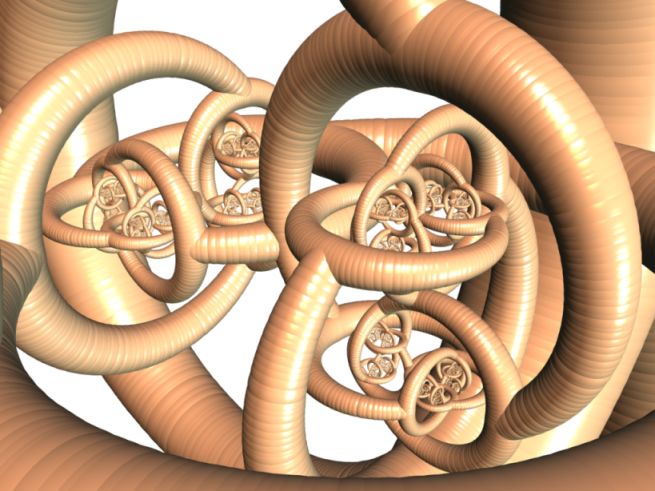What's the prettiest thing in your mathematical inventory?
Many of you seem quite advanced in mathematics, even multi-variable calculus. As many of you know, there are pretty things in advanced math, like fractals or definite integrals ![]()
What's the prettiest thing that you know in math?
As for me, definite multi-variable integrals ![]()
_________________
My favorite emoticon
So far, I would say I do really like systems of differential equations. Here's my first attempt at making WINPP do my bidding for a nonlinear system. It has a paltry two fixed points (the one at the center of the spiral, and there's another at the origin that isn't really obvious)

I love all the crazy spiraling, and I think it looks cooler if you have arrows showing which way each path is going. Dynamical systems are mighty neat.
I'm really looking forward to taking partial differential equations ![]()
PS: Anyone else notice the optical illusion that makes the left border look shorter than the right?
In terms of more advanced maths:
Galois theory is pretty elegant. It's all about symmetry, and proves really interesting things (such as, that it is not possible to trisect an angle with a straightedge and compass)
In terms of pure beauty, Godel's theorems (completeness and incompleteness) are beautiful in the sense of totally shocking, but fundamentally so simple and straightforward.
For now?
Poincare Conjecture
In original form, the Poincaré conjecture states that every simply connected closed three-manifold is homeomorphic to the three-sphere (in a topologist's sense) , where a three-sphere is simply a generalization of the usual sphere to one dimension higher. More colloquially, the conjecture says that the three-sphere is the only type of bounded three-dimensional space possible that contains no holes. This conjecture was first proposed in 1904 by H. Poincaré, and subsequently generalized to the conjecture that every compact -manifold is homotopy-equivalent to the -sphere iff it is homeomorphic to the -sphere. The generalized statement reduces to the original conjecture for .
The Poincaré conjecture has proved a thorny problem ever since it was first proposed, and its study has led not only to many false proofs, but also to a deepening in the understanding of the topology of manifolds (Milnor). One of the first incorrect proofs was due to Poincaré himself, stated four years prior to formulation of his conjecture, and to which Poincaré subsequently found a counterexample. In 1934, Whitehead (1962) proposed another incorrect proof, then discovered a counterexample (the Whitehead link) to his own theorem.
The case of the generalized conjecture is trivial, the case is classical (and was known to 19th century mathematicians), (the original conjecture) appears to have been proved by recent work by G. Perelman, was proved by Freedman (1982) (for which he was awarded the 1986 Fields medal), was demonstrated by Zeeman (1961), was established by Stallings (1962), and was shown by Smale in 196.
The Clay Mathematics Institute included the conjecture on its list of $1 million prize problems. In April 2002, M. J. Dunwoody produced a five-page paper that purports to prove the conjecture. However, Dunwoody's manuscript was quickly found to be fundamentally flawed (Weisstein 2002). A much more promising result has been reported by Perelman (2002, 2003; Robinson 2003). Perelman's work appears to establish a more general result known as the Thurston's geometrization conjecture, from which the Poincaré conjecture immediately follows (Weisstein 2003). Mathematicians familiar with Perelman's work describe it as well thought-out and expect that it will be difficult to locate any substantial mistakes (Robinson 2003, Collins 2004). In fact, Collins (2004) goes so far as to state, "everyone expects Perelman's proof is correct."
The best part - the very shape: A torus, like a doughnut! The shape of space/time itself! I read (some) about Perelman -he apparently has AS; Russian mathematician.
_________________
The ones who say “You can’t” and “You won’t” are probably the ones scared that you will. - Unknown











